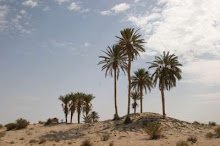 Durghut is the name of the Mosque in the street bearing the same name in the old city of Tripoli between Souk Et Turk and Bab Al Bahar, and next to the Turkish Baths with the same name. Durghut was very well known in history that I feel very humble to add anymore to his praise. However, I’m still fascinated by his life story. When we were young we saw many movies of the Brothers Aruj and Khair Ed Din Barbarossa and their adventures in the sea. I didn’t know then that Durghut was actually the bright student and right hand man of Khair Eddin Barbarossa – who became later, The General Admiral of the Ottoman Navy – as Kaptan Pasha.
Durghut is the name of the Mosque in the street bearing the same name in the old city of Tripoli between Souk Et Turk and Bab Al Bahar, and next to the Turkish Baths with the same name. Durghut was very well known in history that I feel very humble to add anymore to his praise. However, I’m still fascinated by his life story. When we were young we saw many movies of the Brothers Aruj and Khair Ed Din Barbarossa and their adventures in the sea. I didn’t know then that Durghut was actually the bright student and right hand man of Khair Eddin Barbarossa – who became later, The General Admiral of the Ottoman Navy – as Kaptan Pasha.Let’s remember that history was then in the making. Andullus fell down to the Spaniards, Europe was in turmoil as alliances were made, betrayed and made again, and the Ottoman Star was in the rise in the East during the reign of Sultan Suleyman the Magnificent. Tripoli then was under the rule of the Knights of St. John of Malta, given to them by the Spanish.
That’s when Durghut was born to a Moslem family in Anatolia, he was recruited at the age of twelve and trained to be a sailor and a gunner in Egypt and then Alger. He became excellent in both and for his bravery he was rewarded by his master then the famous Khair Eddin Barbarossa to become the commander of his own boat.
Throughout the sixteenth century, Spain and the Ottoman Turks were engaged in a viscous struggle for supremacy in the Mediterranean, and Durghut was called by his enemies as ‘The Devil” for he was to be seen everywhere, from the Greek shores, through the Italian peninsula to the Spanish coast. It was an age of champions, of knights and pirates, of heroes and believers and infidels depending on the side you are on, and the strong made their own rules. Durghut was captured once west of Corsica by the Spanish Commander Doria and spent four years in captivity – as a galley slave - until he was liberated by the Sultan who sent a hundred ships pressuring Genoa to ensure his release.
After Tripoli was liberated by the Turks, Durghut became its second Governor and made it as “the most prosperous and renowned of all the lands of the Barbary Coast of North Africa.”
Durghut, the Moslem fighter, the Sailor, Commander and Governor left us a Mosque, the Baths and a name for a street facing the Sea where he died in the siege of Malta in 1565.









4 comments:
I did not know much about Durghut exept the mosque that was named after him, until now that is, wonderful history, I really appreciate what you are doing Gheriani, thank you.
You're welcome Anglol, and thanks for your kind words.
Gheriani, I echo Anglo Libyan, really had no idea what "darghut" stood for. I am so pleased to learn about Libyan history like this, especially that I love our corsaire past :P
Thank you highlander. I believe old Tripoli streets are full of stories like this. As you like the corsaire past, think about alleys like, zgt. l'espaniole, or zgt. El Francise?
Post a Comment